10 Places Where You Can See Whale Bones Outside a Museum
Whales figure into town arches, church façades, and more.

You’re supposed to swim IN the water. (Photo: hrnick/Atlas Obscura)
Whales are some of the most mysterious, majestic creatures on the planet. While whaling is a despicable business that has been slowly outlawed across the planet over the last century (there’s still a long way to go), whale bones and skeletons make for fascinating artifacts both for their massive size, and their alien shape.
Whale skeletons can be found hanging in countless museums, but all across the world, whale bones are also out on open display, as tributes to life near the sea, fossilized remnants of ages lost to time, or simply as decoration. While the titanic ribs are more common, some towns have entire skeletons mounted like public statues. Here are 10 of the best places to see whale bones outside of a museum.
1. Christ Church Cathedral
Stanley, Falkland Islands
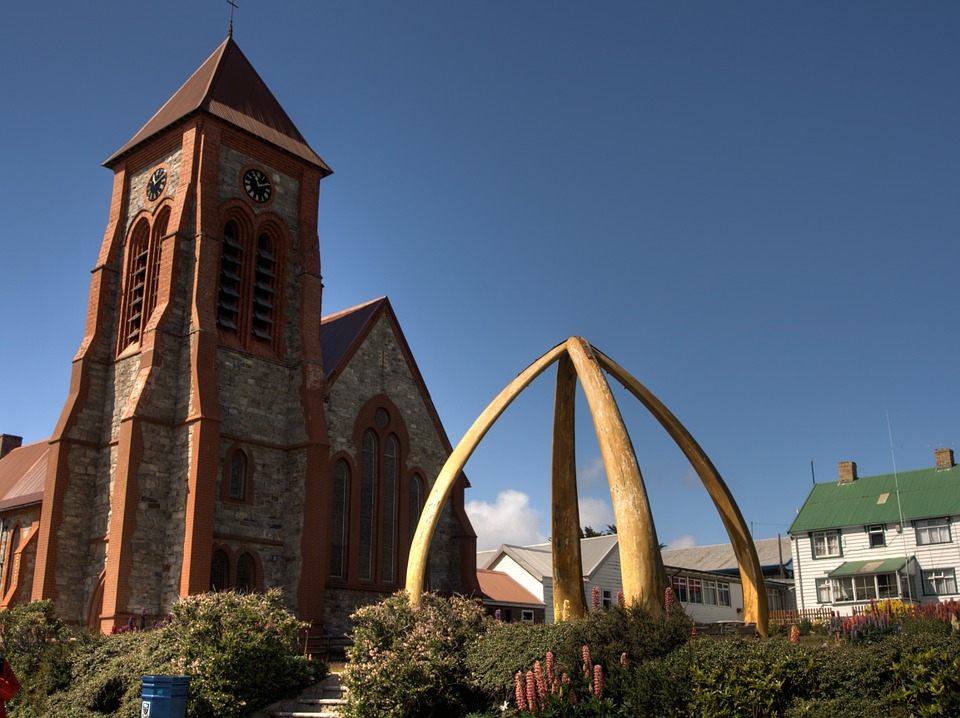
Holy bones. (Photo: Djwosa/Public Domain)
In 1933, an arch made of the giant jaw bones of two blue whales was erected in front of Christ Church Cathedral in the Falkland Islands to observe a century of British rule. The British had claimed the territory in 1785, regardless of the French already laying claim a year earlier. Spain then bought it from the French, and evicted the Brits, only to decide they preferred what is now Argentina. In 1820, the shiny new nation of Argentina absorbed the islands, but in 1833, the British made a comeback, and the Falklands have been theirs ever since. The jaw bones were brought to Stanley from the South Shetland Islands in 1922, and used to create the arch that stands out against the church’s humble backdrop today. (Read more…)
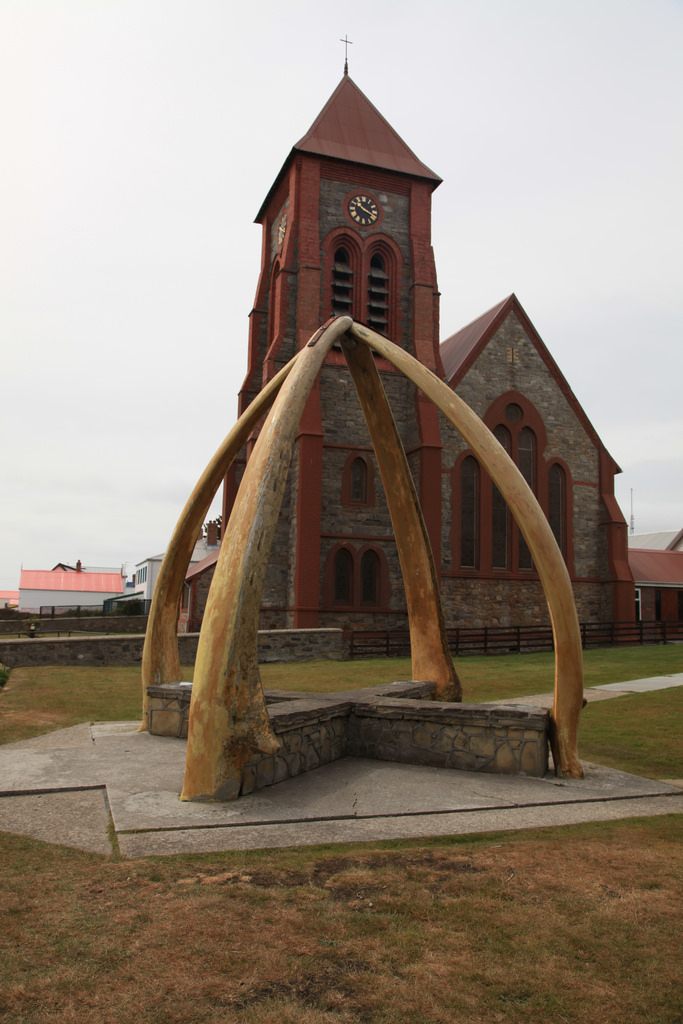
(Photo: Liam Quinn/CC BY-SA 2.0)
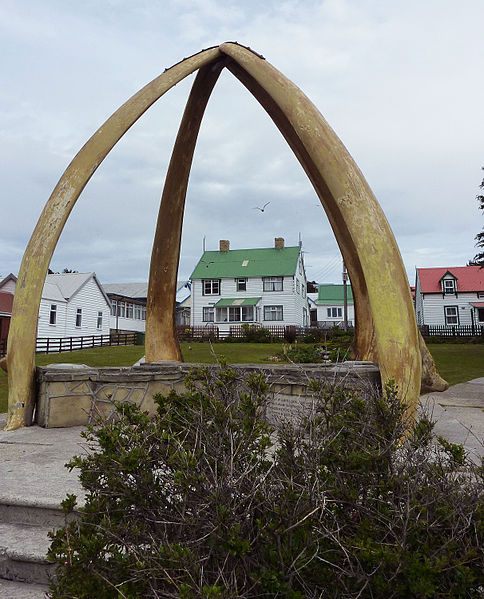
(Photo: RAYANDBEE/CC BY 2.0)
2. Isle of Lewis Arch
Isle of Lewis, Scotland
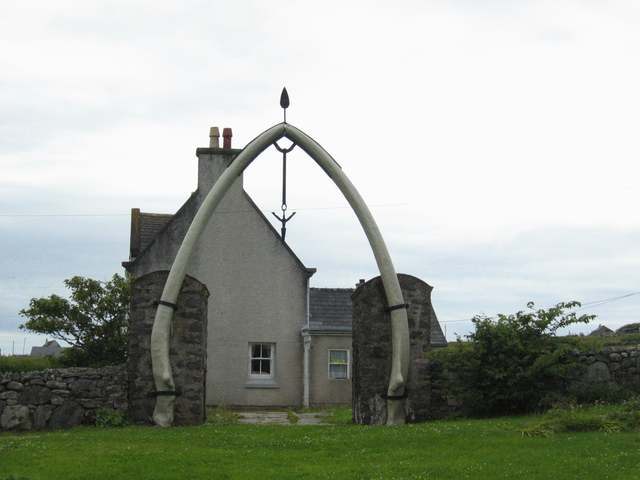
Check out the harpoon replica in the middle! (Photo: John Allan/CC BY-SA 2.0)
In September of 1920, the corpse of an 80-foot-long blue whale drifted into Bragar Bay, on the western Atlantic side of the Isle of Lewis. It had a harpoon in its head, trailed by 50 feet of rope. The harpoon had not detonated, shooting the barbed “stun” into the creature, and so had merely become lodged into the whale’s body thus sentencing it to a slow death. (Read more…)

(Photo: Anne Burgess/CC BY-SA 2.0)

(Photo: Anne Burgess/CC BY-SA 2.0)
3. Whale Bone Alley
Yttygran Island, Russia

They’re just ribbin’ you. (Photo: National Ocean Service/Public Domain)
Consisting of hundreds of whale bones, mainly jawbones, ribs, and vertebrae, Whale Bone Alley is thought to have been created around 600 years ago by a cooperative group of native tribes. Many of the bones were placed in long rows along the shore, which inspired the site’s evocative name. In addition to the massive bones that were planted into the ground, a number of pits used for storing meat were found with fossilized whale bits still in them. The overall effect is of a haunting titan’s boneyard. (Read more…)

(Photo: National Ocean Service/Public Domain)

(Photo: National Ocean Service/Public Domain)
4. Ubatuba Whale
Ubatuba, Brazil

Big bones. (Photo: hrnick/Atlas Obscura)
In Ubatuba, Brazil, in October of 2000, the body of a dead humpback whale was deposited onto one of the city’s busiest beaches, like a sad gift no one wanted. Shortly after its arrival, the whale’s rotting body began contaminating the beach with its overpowering stench and the bi-products of its massive rotting body. (Read more…)

(Photo: hrnick/Atlas Obscura)
5. The Valley of the Whales
Ibsheway, Egypt
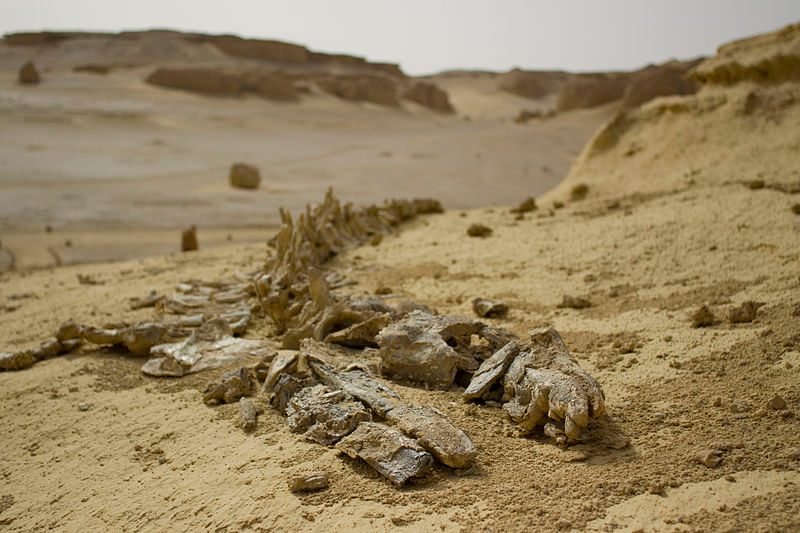
That’s no dinosaur. (Photo: Bernd Out/CC BY-SA 3.0)
The scattered bones of Egypt’s Valley of the Whales belong to a long-extinct suborder of whale known as archaeoceti. What really sets these ancient creatures apart from your ordinary, modern-day cetacean is one odd, yet profoundly important anatomical difference—hind legs. This critical deviation in the fossil record of whales is the basis for the notion that the massive seafaring beasts we know today began their existence as land-based animals. (Read more…)
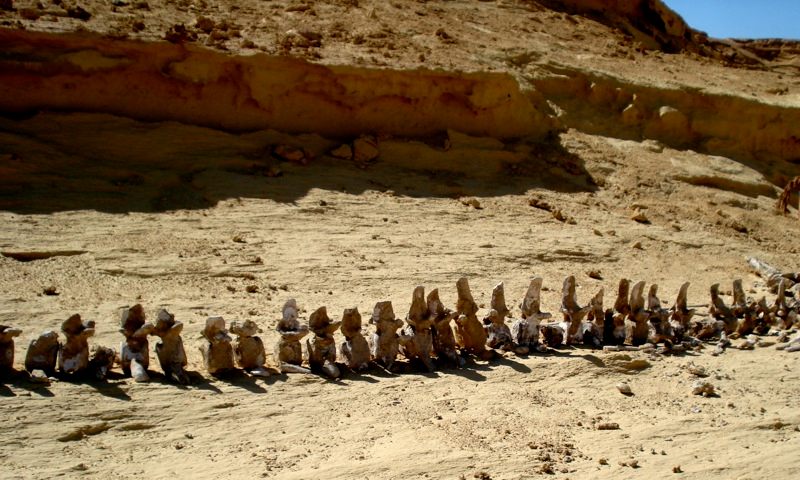
(Photo: tamra hays/CC BY-SA 2.0)
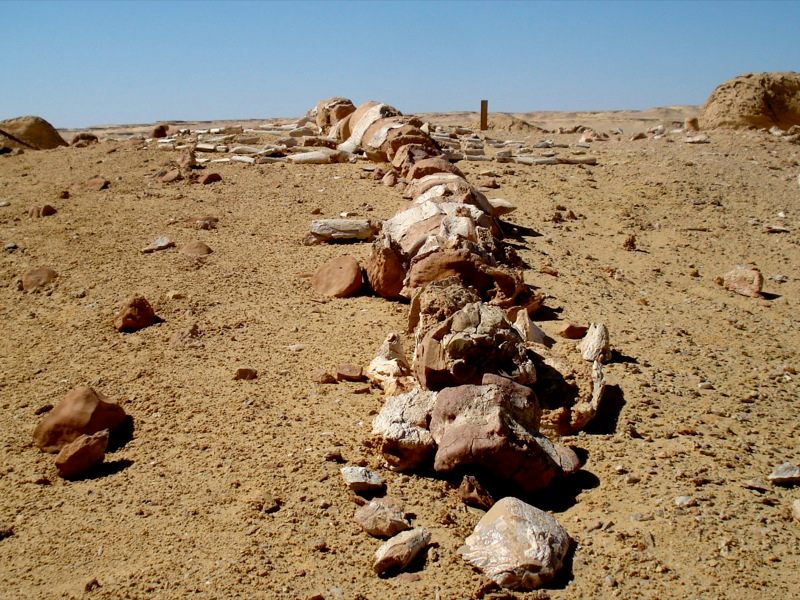
(Photo: tamra hays/CC BY-SA 2.0)
6. Gateway To The Arctic
Barrow, Alaska

Cold Alaskan bones. (Photo: Jeffrey Philip Roddy/CC BY-SA 3.0)
This Barrow, Alaska arch opens up to the Arctic Ocean, symbolizing Barrow’s relationship to the sea and whaling. The “Gateway to the Arctic” sits upon a gray pebbled beach with the shells of traditional whaling boats and other bones scattered about. There is little information about the arch’s history, though sources date it to the end of the 19th century. (Read more…)
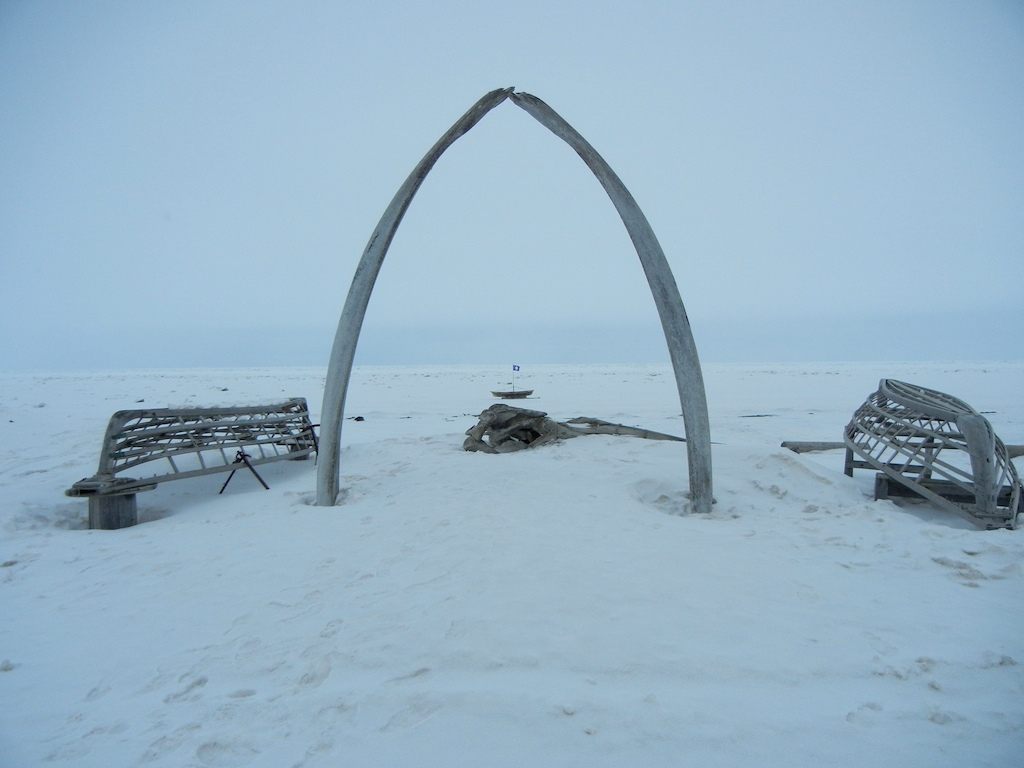
(Photo: Orion Wiseman/CC BY-SA 2.0)

(Photo: Fæ/Public Domain)
7. The Bones of the Wawel Dragon
Krakow, Poland

Some say this rib belonged to a slain dragon. (Photo: Michela Simoncini/CC BY 2.0)
Krakow’s Wawel Cathedral holds the remains of a number of Polish royals as well as some of the country’s most famous religious art, but the real attraction at the massive religious compound is the hanging bundle of bones which are rumored to have belonged to a local dragon. It is more likely however, that the bones actually once belonged to a whale. (Read more…)
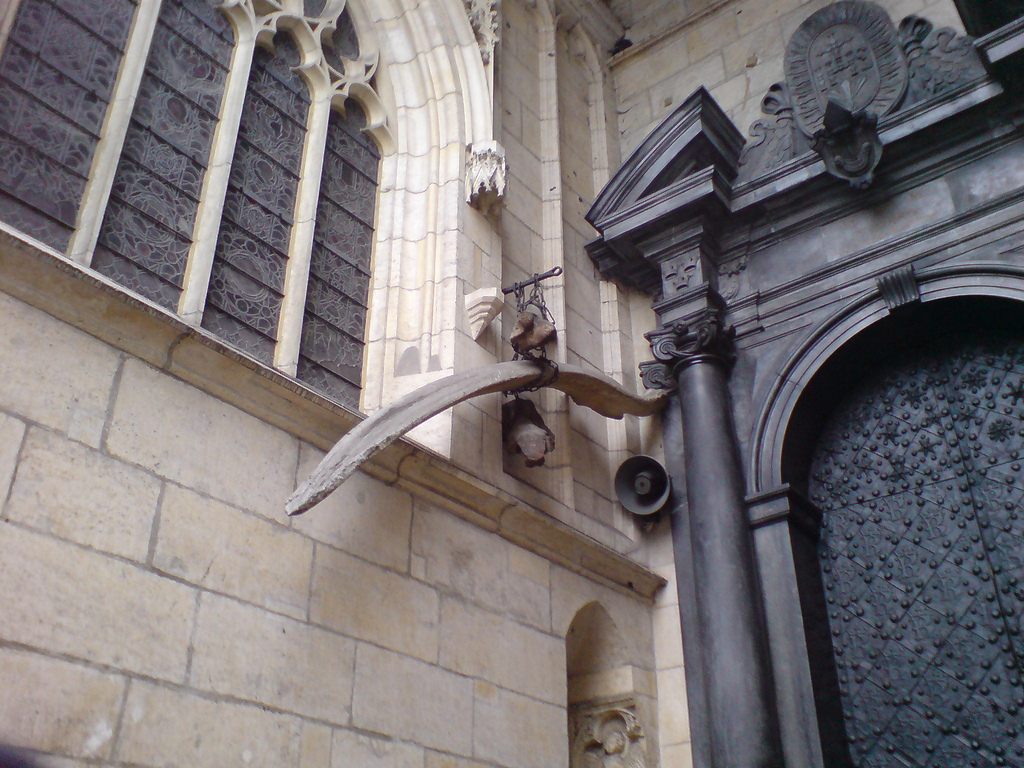
(Photo: Nick Richards/CC BY-SA 2.0)

(Photo: Jorge Láscar/CC BY 2.0)
8. Hals Whale Jaws
Hals, Denmark
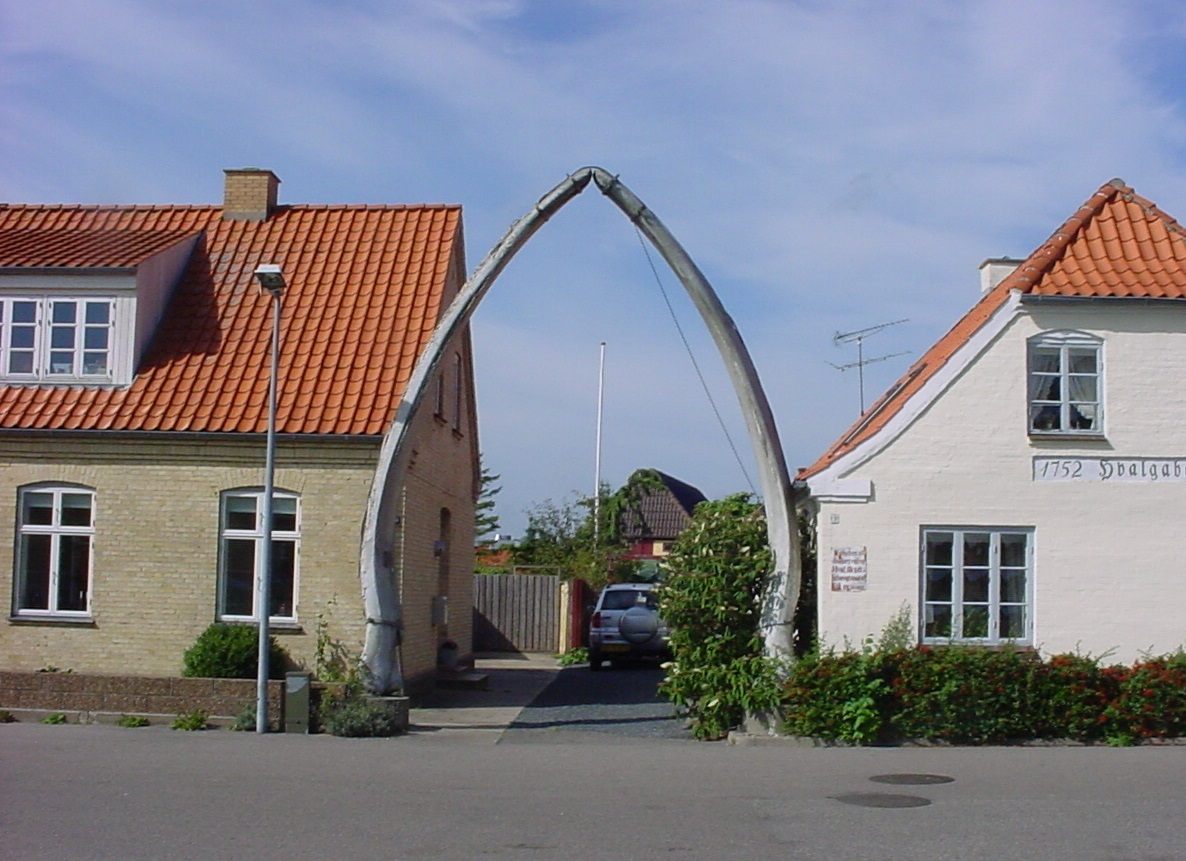
Probably one of the few times it’s good to walk into a whale’s jaws. (Photo: Hans Olav Lien/CC BY-SA 3.0)
The original whale that ”donated” its bones to the town of Hals, Denmark, was shot back in 1868 in the Barents Sea, by Captain C. Klitgard, a resident of Hals. After returning with his kill, the blue whale’s jaw bones were removed, bleached, and given a new life as a local landmark. The original jaws were destroyed in 1953 where a truck hit the fragile old bones. Sadly, the remains were not worth trying to save. (Read more…)

(Photo: Tomasz Sienicki/CC BY 3.0)

(Photo: Tomasz Sienicki/CC BY 3.0)
9. Kilbrittain Whale
Kilbrittain, Ireland

That seems like a mighty flimsy net. (Photo: celticjoker/Atlas Obscura)
On January 15th, 2009, a fin whale stranded itself on the coast of the Burren, a karst landscape in Ireland, most likely disoriented by unusually high tides. When the marine giant was discovered, the locals sprung into action to save the creature by dragging it back into the water with the help of the Courtmascherry lifeboat, but to no avail. With no further options, the whale unfortunately perished there on the shore. A specialist was flown in from America to take a look at the carcass, and an autopsy was performed. The only problem left was what to do with the body. (Read more…)

(Photo: celticjoker/Atlas Obscura)

(Photo: celticjoker/Atlas Obscura)
10. Whitby Whalebone Arch
Whitby, United Kingdom
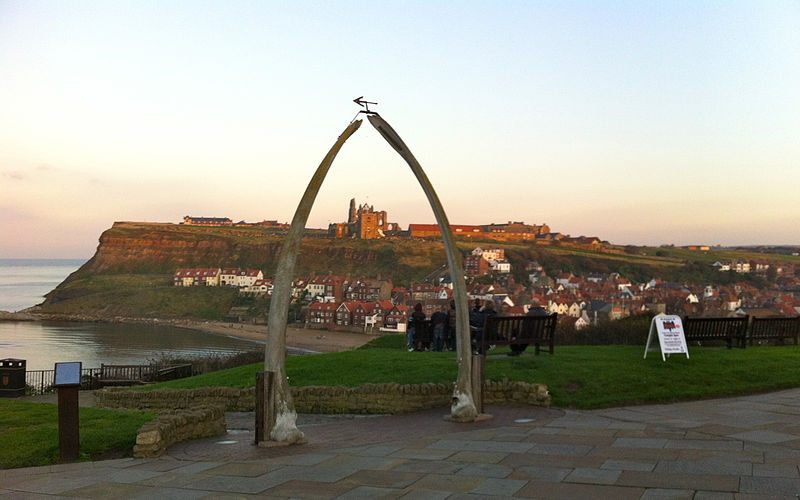
Not a bad view from the bones. (Photo: Illuminatusds/CC BY-SA 3.0)
Picturesque though it be, the current whale bone arch in Whitby is not the original; it’s actually the third arch to stand in this spot. In 1963 the original whale arch was replaced by 20-foot jaw bones from a 113-ton Fin whale killed by a Norwegian whaling ship. (Read more…)

(Photo: Trish Steel/CC BY-SA 2.0)
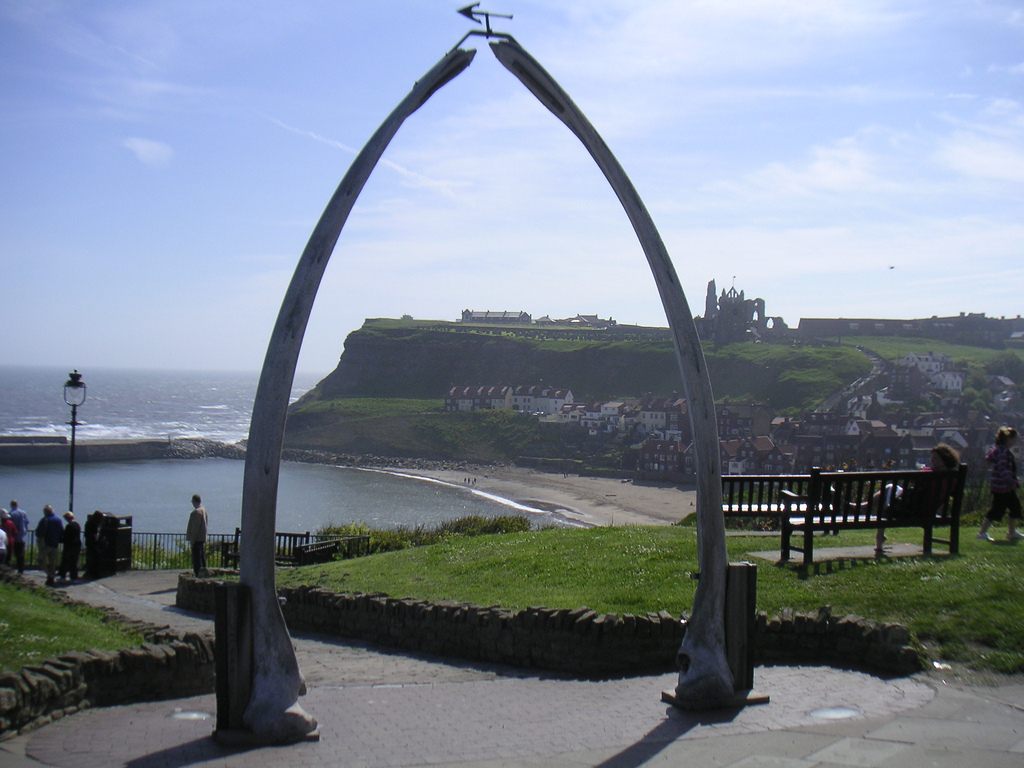
(Photo: David (Davo) Smith/CC BY 2.0)


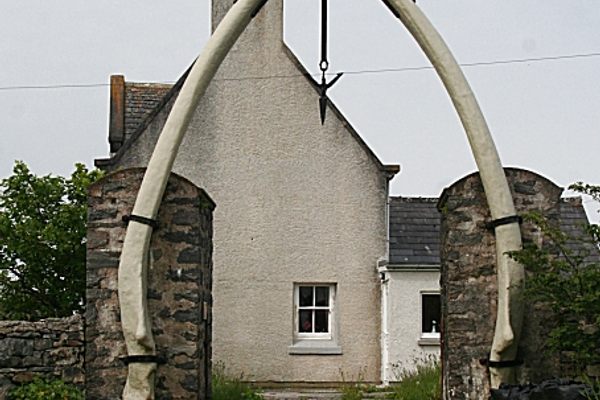
















Follow us on Twitter to get the latest on the world's hidden wonders.
Like us on Facebook to get the latest on the world's hidden wonders.
Follow us on Twitter Like us on Facebook